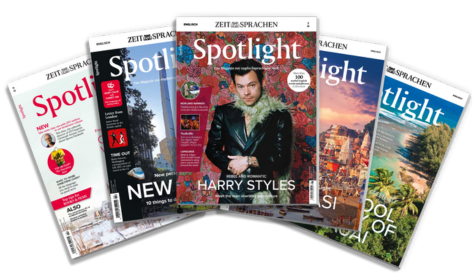In the year since the newspaper I work for moved to a sleekgepflegtsleek, modern new building, I have given tours to curious former co-workers who left the company long ago. They all make the same observation: “It’s so quiet!”
Of course, we no longer share a building with rumblingrumpelnd, polterndrumbling printing pressDruckerpresseprinting presses, but those operations long ago moved out to suburbanVorstadt-suburban factories. And our new space has a built-in silence common to a lot of high-tech buildings — the muffledgedämpftmuffled acoustics and white-noise whooshzischendes Rauschenwhite-noise whoosh of energy-efficient heating and cooling. But I know that’s not what they mean. They mean: Why isn’t anyone talking? It’s true. They’re not. And it’s a change in the workplace that has happened so slowly that I didn’t notice it until now.
Learning from the newsroom noise
I have always loved the chatterGeschnatter, Geplapperchatter of the newsroomNachrichtenabteilungnewsroom. The first newspaper I worked for had its offices in a cavernoushier: geräumig, hallenartigcavernous storefrontLadenfront, Geschäftshausstorefront with huge windows that looked like an old bank. You could hear everything. I sat with three other reporters, our desks pushed together. We could talk all day about music or TV shows or who was dating whom — or about the stories we were working on, of course.
You could hear everything
When I joined The Washington Post, still in my 20s, the noise of the newsroom was essential to improving my journalism skills. I listened as older colleagues chatted up sources over the phone — sometimes charming them with gossipKlatschgossip and schmooze (N.Am.)Geschwätzschmooze, other times demanding the answers they needed to write their stories.
The silence of e-mails
Once, an editor listened as I made a routine round of calls — and then informed me that I was approaching them all wrong. And countless times, one reporter would overhear another reporter’s conversation and realize they had helpful information or a way to collaborate on a project. Often, I would overhear talk about what was likely to be the big scoop (ifml.)Knüllerscoop in the next day’s paper — and it was always thrilling to know it first.
Then e-mail came along, as well as various systems of electronic inter-office messaging. They were supposed to make a big newsroom feel smaller, to avoid long treks across the building when on a tight deadline. But this also became an easy way to send a phone number, say, to the colleague next to you, or a joke you didn’t want to share with the entire room.
Phone calls? Only from a private room!
Then the newspaper began to hire more staffer (N.Am.)hier: Redaktionsmitgliedstaffers focused on web production. We used to laugh at this new breedRasse, Artbreed and their antisocial ways. They wouldn’t say a word to the people sitting next to them, but would busily type back and forth to each other. Eventually, it seems, we all picked up the habit.
At some point, it also became easier — or more comfortable? — to e-mail with sources rather than talk to them on the phone. That further mutedämpfenmuted the noise, to the point at which people worried about having phone conversations in front of others. Today, nearly anyone doing a phone interview goes into a private room. So now I don’t know what they’re working on — or who they’re dating. A lot gets lost when our conversations move to screens.
Neugierig auf mehr?
Dann nutzen Sie die Möglichkeit und stellen Sie sich Ihr optimales Abo ganz nach Ihren Wünschen zusammen.



